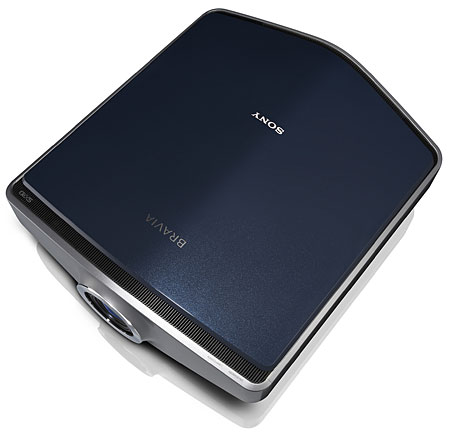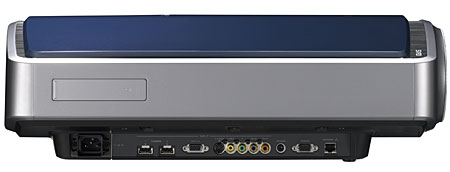Sony VPL-VW200 SXRD Video Projector

The new VPL-VW200 ($14,999) follows on the heels of the VPL-VW100 "Ruby." The VPL-VW200 is now the flagship of Sony's third generation of SXRD projectors, competing not only against competing designs from other manufacturers but also against its less expensive sibling, Sony's own VPL-VW60 ($5,000, review in progress). The VPL-VW200 it will have to slug it out in a very different projector market than existed even two years ago. To do so it needs to offer something special. I believe it does.
Description
Apart from its darker color, the VPL-VW200 is a cosmetic clone of the VPL-VW100. It is identical in size and just a couple of pounds heavier. Its 1.8x zoom lens is the only one offered, and it will fill a 100" diagonal (87" wide) 16:9 screen from a distance of approximately 11-18 feet.
SXRD (Silicon X-tal Reflective Display) is Sony's variation on LCoS (Linear Crystal on Silicon) display technology. The optical engines in all of Sony's SXRD products, including this one, use three separate SXRD chips, one each for red, green, and blue. While the SXRD panels used here are the same size as those that are used in the VPL-VW100, they are said to have been newly designed with wire grid polarizers and high contrast plates to more than double their previous chip-level native contrast ratio.
The projector has a 400W Xenon projection lamp. Sony does not specify the lamp life, since it depends on how the projector is used, but estimates that it typically should hast 2500 hours (presumably this is to half brightness). Xenon is said to offer a color spectrum superior to that in the UHP lamps used in most home theater projectors, but the tradeoff is cost. A replacement lamp for the VPL-VW200 will set you back $999.
The projector's controls are located behind a panel on the side of the case, just above the inputs and power connection. The inputs include an Ethernet port that provides for external setup and control of the projector from a PC, including possible updates.
The remote control is a good one, with clearly legible writing on its backlit buttons. There are direct access buttons for many of the controls, including Sharpness, Brightness, and Contrast, and the six available picture modes. But there is no direct selection of inputs; you cycle through them with the Input button until you get to the one you want.
Setup and Operation
Most digital projectors aren't difficult to set up once they are properly positioned relative to the screen, and the VPL-VW200 is no exception. The zoom, focus, and vertical lens shift are all powered. A built-in test pattern is the default image from the projector for these adjustments, but you can shut Sony's pattern off and tweak the lens setup with an image from one of your own sources.

There is also a way to slightly shift the lens to change the horizontal position of the image. But this is a mechanical adjustment best left to the installer who may have miscalculated a bit on the projector/screen geometry.
Many of the features here are carried over from earlier Sony projectors. These include all the usual video adjustments, different aspect ratios, and six configurable Picture Modes: Dynamic, Standard, and Cinema, plus three User settings. You can change the settings in the Dynamic, Standard, and Cinema modes, as well as for the User modes. You can also put in (some) different video settings not only for each input, but for each source resolution as well.
Real Color Processing (RCP) allows adjustment of each of the primary and secondary colors, and while Sony's manual suggests using it to taste, that's merely an invitation to create a bad picture when using it without precision test tools. The ergonomics of this feature also remain as odd and confusing here, as it is in the many other Sony displays that offer it. I left the RCP Off.
An effective, multi-position Noise Reduction control is also provided if you need it (I did not).
The VPL-VW200 offers three Gamma Correction settings. Gamma adjusts the image output in the mid-brightness region, independent (in theory) from the bottom end (controlled by the Brightness control) and the top end (controlled by the Contrast control). I preferred either Off or Gamma1 for most of my viewing, though unusually bright program material sometimes benefited from Gamma3.
The gamma may also be adjusted to custom settings using Sony's ImageDirector3 computer program, supposedly included with the projector on a CD-ROM. That disc was not provided with our review sample, so I could not test it. But I didn't really feel any pressing need to deviate from the offered settings.




























































